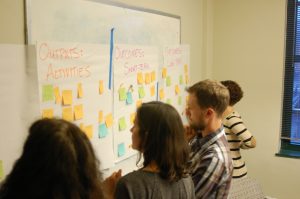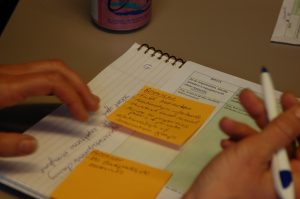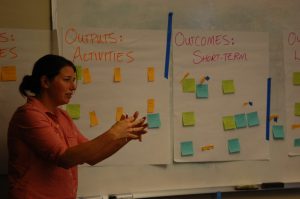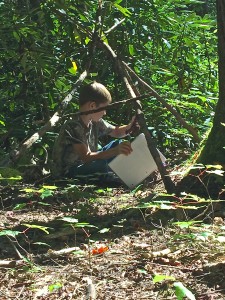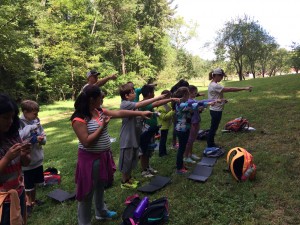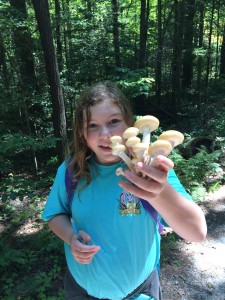We are excited to have made an appearance on the local news segments of WUNC’s All Things Considered and Morning edition!
If you missed it, you can read the transcripts and listen to two out of three of them below. This story covered our most recent paper published in Environmental Education Research, but it relates to all the climate change work we are doing with kids. Many thanks to WUNC, Sea Grant, and all the collaborators on the project!
Segment one:
Listen here
Transcript: A study from NC State suggests adolescence may be a key window for environmental education. Katheryn Stevenson surveyed four hundred North Carolina students about their attitudes toward climate change. She says middle schoolers have the capability to understand complex issues… but have not yet fully developed their world-view.
[Climate education efforts and communication efforts seem to be a little but more effective with kids because they don’t have the same sort of ideological filters that adults do, that drive our polarization as a society]
The study was published in the journal Environmental Education Research.
Segment two
Listen here
Transcript: Researchers at NC State have identified key factors that influence how kids think about climate change. The study found the strongest predictors of concern were a personal belief that climate change is caused by humans… and the extent to which friends and family discuss it. Lead author Katheryn Stevenson says adolescence is an ideal time to educate children about environmental issues.
[Their brains are absorbing so much, so quickly, that talking with middle schoolers seems to be a time when things stick, so I think we have a real potential for influence, to shape a whole generation on how they think about climate change]
The study surveyed 400 middle school students living in coastal North Carolina.
Segment three
Transcript: A new report from NC State shows kids who discuss climate change with friends and family are more likely to be worried about its impact on the planet. Katheryn Stevenson led the study… which surveyed four hundred middle school students living in coastal North Carolina. Kids who are in middle school now will face the effects of climate change as adults. Stevenson says parents and teachers can help prepare the next generation by discussing the issue.
[if we’re concerned about preparing our kids for this future ahead, we talk about everything from teaching them how to drive, we teach them how to take care of themselves. I would argue a big thing we need be doing is preparing them to deal with these big environmental challenges]
The study found the students’ concerns about climate change were influenced by how much they talked about it with others… even if they disagreed.


